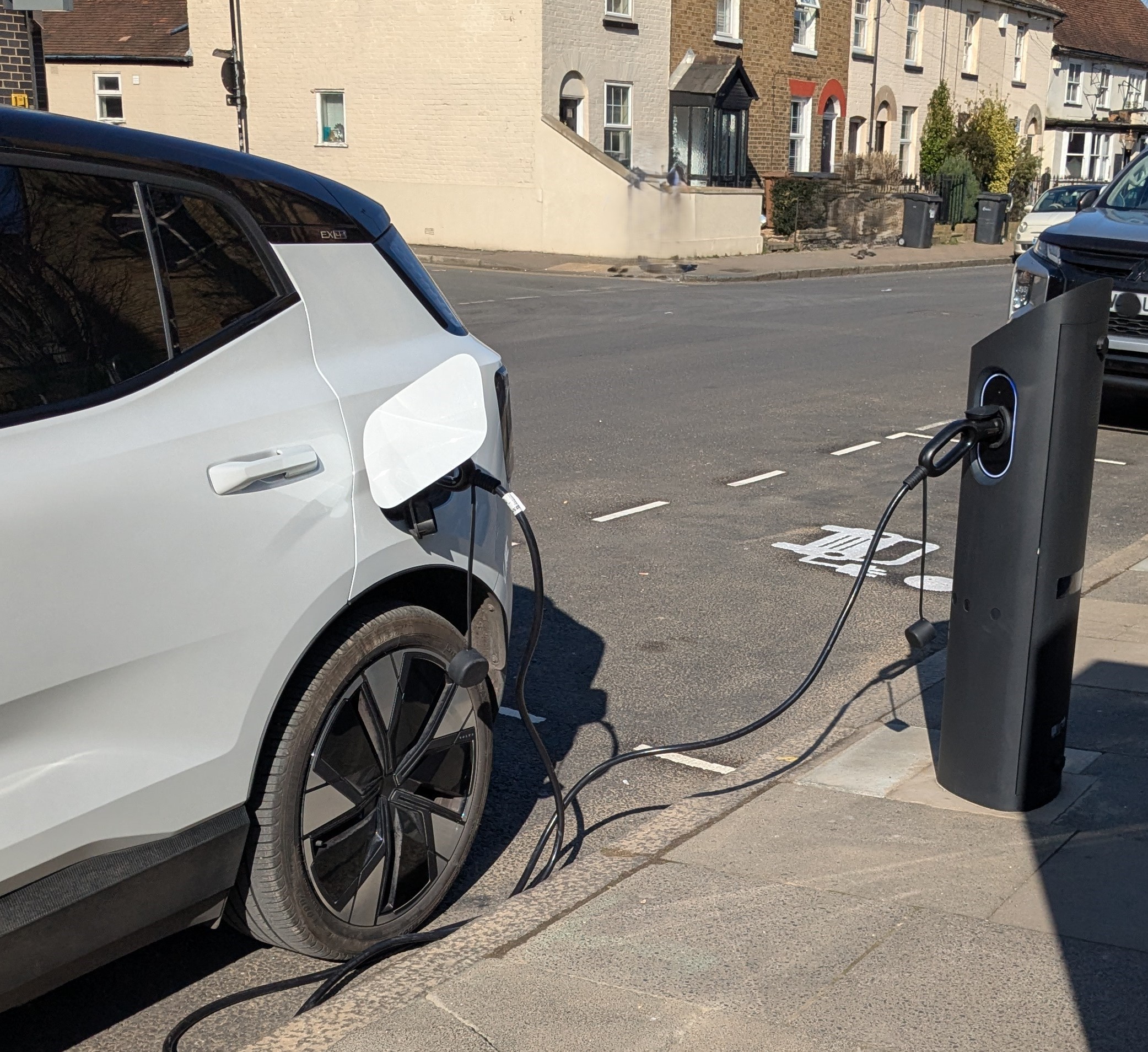Electric vehicle charging in Essex
Essex, like much of the UK, is generally in the late stages of ‘early adopter’ EV uptake. This is reflected by the general level of charging infrastructure, uptake of electric vehicles and other e-transport services in the county.
However, Essex has seen a gradual increase in ownership of EVs in recent years, rising from 2990 battery electric vehicles in 2020 to 17,113 by the end of June 2024 as well as a further 11977 plug-in hybrid vehicles.
EVs rely on a comprehensive private and public-facing charging network and Essex currently has at least 744 registered public charge points (based on statistics from the Department for Transport).
We are working towards our strategy’s goal of seeing 1,500 public charge points in Essex by the end of 2025 and 6,000 by 2030, and there are multiple projects being undertaken by us to achieve these goals.
On-Street Residential Charging Scheme (ORCS)
 Residential charger in Essex
Residential charger in Essex
In 2023, we secured £236,000 from the On-Street Residential Charging Scheme (ORCS), administered by the Office of Zero Emission Vehicles. This funding has helped us to procure a charge point operator (CPO), Qwello UK, who are currently in the delivery phase of installing sixty-six public on-street charge points in Essex after working with us to determine appropriate locations. The ORCS funding is being used to subsidise capital costs for the project, de-risking the investment from the CPO installing ahead of demand. The ORCS project has been planned so that there are charge points in key areas where there is high anticipated charging demand (particularly from residents unable to charge an EV on a driveway or in a garage), and so that there are at least 2 charge points in every one of the twelve district, borough and city areas. The charge points are capable of delivering up to 22kW power for fast charging speeds (provided the vehicle is capable of charging at that speed) and are equipped with sensors that detect when drivers park in the associated charging bays and do not plug in their vehicle (thus ‘blocking’ users that need to from using the charger), helping us to understand the frequency of charge point ‘blocking’ and ensure high availability for those that wish to use the charge points.
Local Electric Vehicle Infrastructure (LEVI) fund
In March 2023, the UK government announced over £380 million of funding for local authorities across England through the Local Electric Vehicle Infrastructure (LEVI) capital fund, administered by the Department for Transport (DfT). The LEVI fund aims to deliver a step-change in the deployment of local, primarily low power, on-street charging infrastructure across England, and accelerate the commercialisation of, and investment in, the local charging infrastructure sector. Essex was provisionally allocated £8.382m of this funding which we submitted a business case for in July 2024. The application was successful, and therefore in 2025 we will run the procurement to leverage high-value private investment, for the delivery of at least 5000 public 7-22kW charge points over a 5-year period. This project will help achieve the goals set out in our strategy and deliver the right charger in the right place in alignment with the six strategic priorities.
Cross-Pavement Charging Solutions
In response to innovations in the private sector developing new charging solutions for residents, successful pilot schemes undertaken by other local authorities and engagement with residents, our EV strategy team are developing a trial framework to allow a limited number of cross-pavement channels to be installed, used by residents, and monitored in Essex. Trailing a charging cable across the public footway is illegal and it is not permitted by Essex Highways even if the cable is covered by matting or run through plastic or rubber cable cover. Residents found to be in contravention of this policy may be subject to enforcement procedures.
Cross-pavement channels can be a safe, convenient and equitable solution to the problems posed by the illegality of trailing a cable across the footway and the difference in price between public EV charging and charging on a home electricity supply. Although public on-street charging in residential areas is significantly cheaper than charging on a rapid (50kW +) charge point and is cheaper per mile than petrol or diesel, those without a driveway or off-street parking space where they could charge an EV still pay more to charge than those who charge from home. This is partially because of a difference in VAT charged on the energy (5% for home electricity vs 20% for public charging). Cross-pavement channels can be used to allow a resident to install an EV charger at their home and use that to charge their EV on street with the cable going through the channel rather than over the footway as a trip hazard. They are not appropriate in every location but for some streets cross-pavement channels may help residents feel able to charge an EV and therefore switch from a petrol or diesel vehicle for their car journeys. Stay tuned for more information on the possible cross-pavement solution trial scheme.